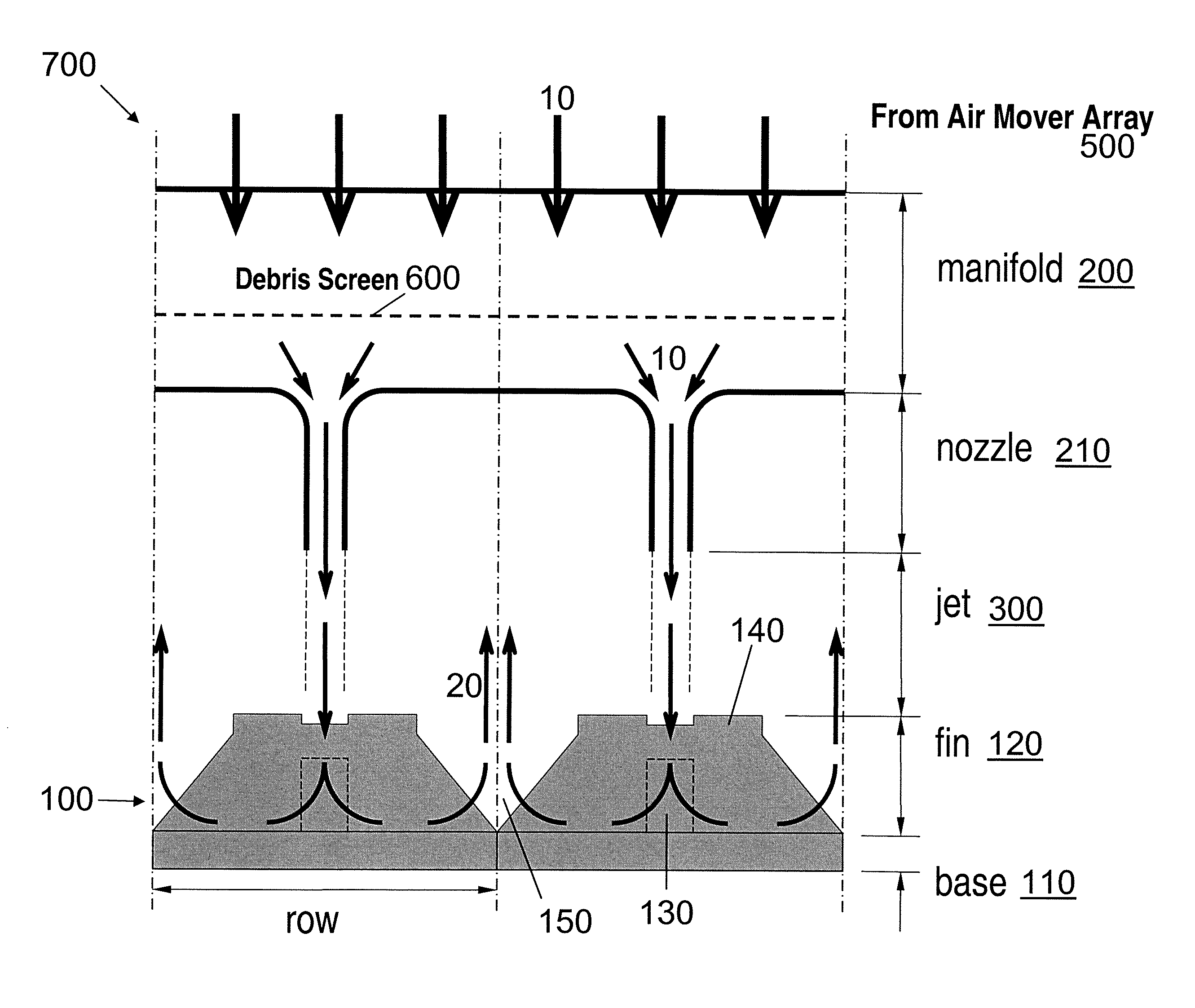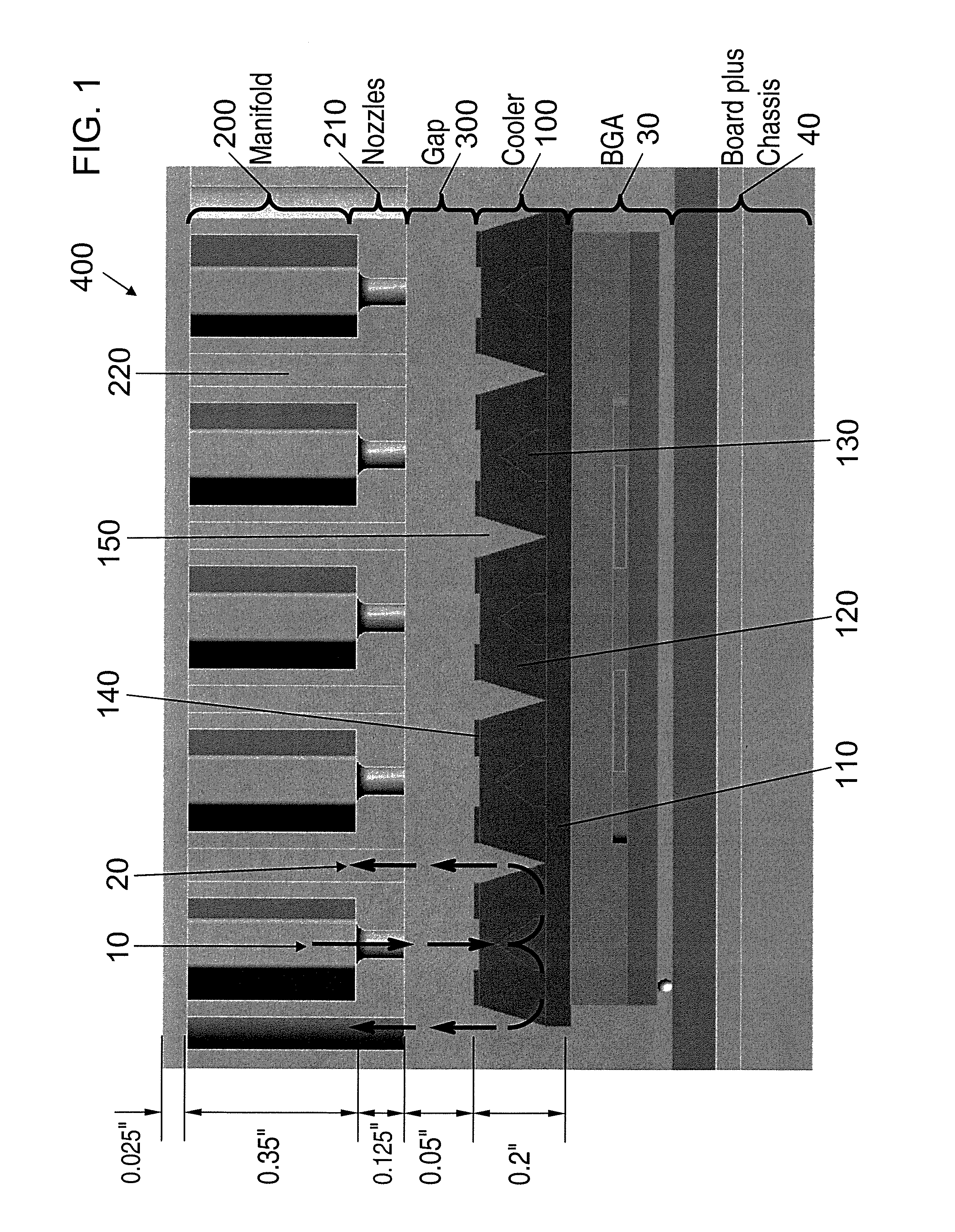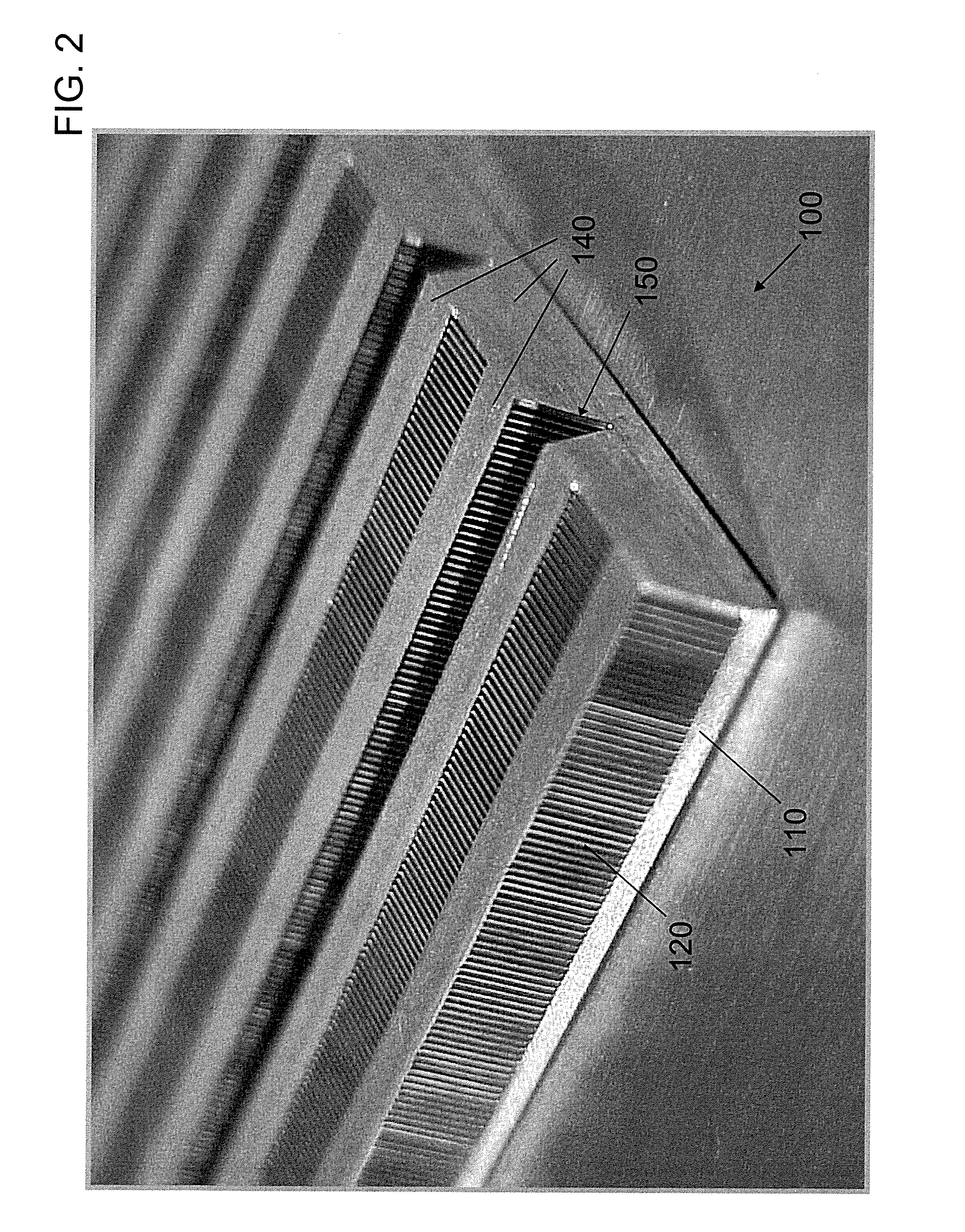Architecture for gas cooled parallel microchannel array cooler
a technology of parallel microchannel arrays and cooling systems, applied in the direction of electrical apparatus construction details, semiconductor/solid-state device details, lighting and heating apparatus, etc., can solve the problems of complex design considerations, high cost, and high cost of cooling components such as components, and achieve the effect of reducing the number of components
- Summary
- Abstract
- Description
- Claims
- Application Information
AI Technical Summary
Benefits of technology
Problems solved by technology
Method used
Image
Examples
Embodiment Construction
[0048]Exemplary embodiments of the present invention will now be described in more detail with reference to the accompanying drawings. In the drawings, like reference numerals refer to like elements throughout.
[0049]Referring now to FIG. 1, in a side view (i.e., a widthwise view) of an exemplary embodiment of the present invention, an air-cooled parallel microchannel array cooling device 400 is shown attached to an example heat source, in this case a ball grid array (BGA) 30 mounted on a circuit board with chassis 40. The heat source can be anything, electronics or otherwise. While this particular cooling device uses air with which to cool, the present invention is not limited thereto. For instance, any gas may serve as a cooling medium. For purposes of this disclosure, therefore, air will serve as an example cooling gas.
[0050]The cooling device 400 includes a parallel microchannel array cooler 100 and a manifold 200. The cooler 100 includes a base 110 attached to the heat source (i...
PUM
 Login to View More
Login to View More Abstract
Description
Claims
Application Information
 Login to View More
Login to View More - R&D
- Intellectual Property
- Life Sciences
- Materials
- Tech Scout
- Unparalleled Data Quality
- Higher Quality Content
- 60% Fewer Hallucinations
Browse by: Latest US Patents, China's latest patents, Technical Efficacy Thesaurus, Application Domain, Technology Topic, Popular Technical Reports.
© 2025 PatSnap. All rights reserved.Legal|Privacy policy|Modern Slavery Act Transparency Statement|Sitemap|About US| Contact US: help@patsnap.com



